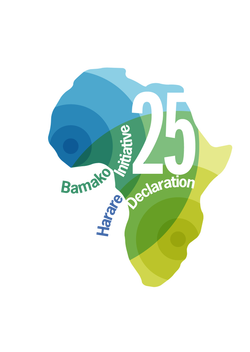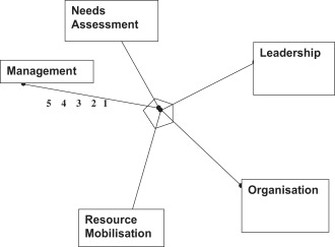
It will soon be 27 years that the Bamako Initiative was launched and community participation became a core component of health policy in Africa. Through eight interviews, one personal reflection, and your many comments in French and English, what was once the "magic bullet" of community participation turned out to be a complex topic. The debate is certainly not closed but this blog post series is coming to an end. Here is my own (subjective) conclusion; it brings more questions than answers.
First of all, the series has put the Bamako Initiative in the continuum of International Health (“global health” we would say today) strategies and policies. The inspiration of the Bamako Initiative seemed a little blurry at first, somewhere between the Chinese barefoot doctors and the 1977 Alma-Ata Conference on Primary Health Care. However, the interview with Walter Kessler shows us how, in the early 1980s, Doctors Without Borders had already set up experimental health committees in Chad and Mali. They would soon inspire the Bamako Initiative. Susan Rifkin and Agostino Paganini explain the relative success of the initiative in its early years, with the involvement of UNICEF in the field and under charismatic and dynamic leadership of the duo formed by Dr. Mahler (WHO) and Mr. Grant (UNICEF). As already foreshadowed by Doctors Without Borders' experience with the health stores in the 1980s, the type of community participation advocated at the Bamako conference came along with the introduction of user fees, which states justified by their inability to pay for everything because of the debt crisis. From its inception, the Bamako Initiative had two faces, which even this series that focused on community participation has not been able to totally disjoint. On the one hand, there is community empowerment and self-management; and on the other hand, there is a more expensive access to care. The question that still arises today, which is answered in the negative by Sophie Witter, is whether it makes sense to continue to link the two?
The Bamako version of community participation -with the health committee as a central mechanism- spread like wildfire in Africa. However, the local context was often neglected, and strategies that worked well in some places worked much less so in others. There is no one size fits all, as illustrated by the contrasting experiences of the DRC where the idea of participation was easily accepted, and neighbouring Uganda where the principle of community health management was going against traditional governance. Once past the initial enthusiasm, community participation initiatives, especially when their support by states or international organisations was discontinued, portended a disengagement of the states vis-à-vis the health of their populations. Community participation cannot be imposed. However, to carry on the idea of "health for all", humanize relationships to health-care services, and develop non-technocratic and holistic approaches to health-care, direct and deep community participation remains a promising track. It is in this spirit that the third recommendation of the recent Dakar Conference proposes to strengthen the capacity of the community to make it a “real partner for the analysis of its health problems, and the planning, implementation and evaluation of health interventions.”
As I write this post, the Bamako Initiative is dead. It has been so for a long time already. Its user fees component is roundly criticized. Its (resource-intensive) community participation component, which has often been hijacked by politicians and was much slower than expected to yield visible impacts, has not been the panacea the global health community once thought it would be. Nevertheless, the idea of giving people a more central place in their health-care system continues to live on. In different parts of the globe, new forms of social accountability and direct involvement of citizens in their own health are taking place. In order to work, these must take greater account of local situations and be of direct interest to the people who are getting involved. The community needs to see an interest in participating. This is basically what the IRC officials, who implemented the Tuungane programme, which generalized a participatory approach to rebuilding communities (and their health services) in Eastern DR Congo, and Dr. Canut of Burundi, who explained how community health workers can become important parts of the health system if they are given incentives, were saying. Community participation cannot be improvised; the example of the ASACO in Mali shows that continued investment and a solid organization are needed to sustain community participation. Once past the naive vision of the community that would ex nihilo organise itself for better health-care, the challenge seems to find ways to encourage and induce participation and maintain it without manipulating it.
In this context, research about community participation still seems in its infancy. More studies are needed and they will probably need to use mixed methods in order to reach conclusions that go beyond the description of cases. It is essential to better understand the link between health facilities and their users. How can we build people's participation? How does it lead (or not) to health improvements? If the process is not linear, how should we report about it? 27 years after the Bamako Initiative, we still know very little about the impact of community participation strategies on health and access to health; especially compared to recent and less recent studies on other major global strategies such as (community-based) health insurance, performance based financing, or fee exemption.
The elephant in the room of this series is the question of power. Community participation is fundamentally about power, which is often disputed among medical staffs, medical authorities, and the population (and within the population itself). Community participation (in health) is not limited to questions that are strictly medical. The Malian adventure, the timing of the set-up of community participation mechanisms in Uganda, or the ASACO system in Mali remind us that participation is political. It is a question of governance. If this were not the case, if the dimension of power was removed from community participation, what we would observe is a pastiche of participation, an empty shell that would quickly lose its appeal. Rather than continuing to avoid the issue of power and call community participation a strictly "technical” question, it is essential to recognize that participation involves the redistribution of power and decisions on the organization and definition of health-care services.
Finally, this series reminds us that there is no magic bullet in international public health. Just like performance-based financing, fee exemption, and all the other ‘grand strategies’ in global health, community participation in itself is not sufficient to achieve health for all. The concept needs to take account of field realities and adapt, and even then, it remains only one element to be combined with other strategies to respond to the many different issues of quality universal health care.












